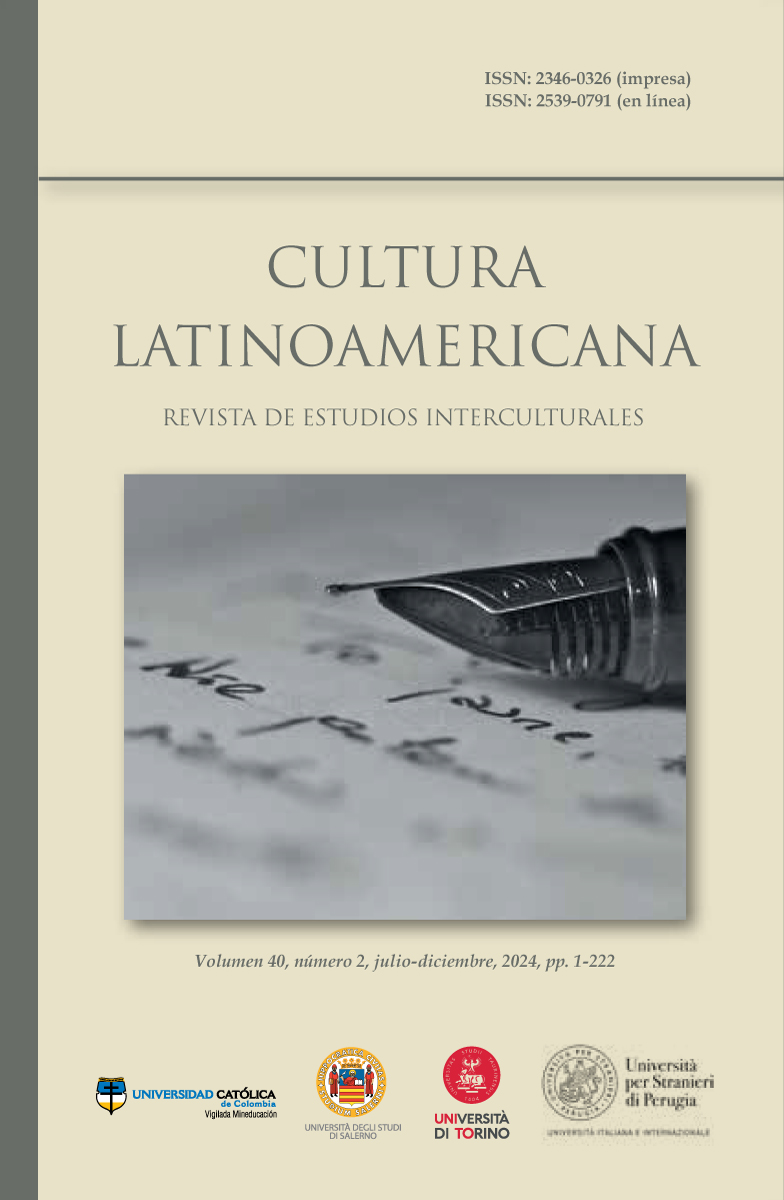
Este trabalho está licenciado sob uma licença Creative Commons Attribution-NonCommercial-ShareAlike 4.0 International License.
Ao submeter artigos para avaliação, os autores concordam em transferir os direitos de publicação para Cultura Latinoamericana. Revista de Estudios Interculturales para publicação em qualquer meio. A fim de aumentar a sua visibilidade, os documentos são enviados para bases de dados e sistemas de indexação, e podem também ser consultados no sítio Web da Revista
Resumo
This brief paper provides an extensive analysis of the role of state feminism in combatting genderbased
violence against women, focusing on its implementation and impact in Italy, France, and
Spain. The study examines the connection between state feminism—defined as the incorporation
of feminist ideas and ideals into official procedures and policies—and the frequency and kinds of
gender-based violence that take place in these countries. Gender-based violence is still a serious
issue in France, Italy, and Spain, requiring extensive interventions. The evidence reveals that state
feminism, when effectively integrated, is instrumental in fostering environments that condemn
gender-based violence and promote gender equality. This initial comparative study contributes
to a broader understanding of how governmental entities and feminist ideologies intersect to
construct safer, more egalitarian societies.

Referências
Allwood, G. (2016). Gender-based violence against women in contemporary France: domestic violence and forced marriage policy since
the Istanbul Convention. Modern, Contemporary France, 24(4), 377–394. https://doi.org/10.1080/09639489.2016.1203886
Astelarra, J. (2005). Veinte años de políticas de igualdad. Cátedra.
Baker, P. L., & Leicht, K. T. (2017). Globalization, Gender, and Development: Toward a Theoretical Understanding of Public
Gender-Based Violence against Women and Girls. Sociology of Development, 3(4), 323–345. https://doi.org/10.1525/sod.2017.3.4.323
Bergman, M. M. (2007). Multimethod research and mixed methods research: old wine in new bottles? Journal of mixed methods research,
(1), 101–104. https://doi.org/10.1177/1558689806291429
Casique Casique, L., & Furegato, A. R. F. (2006). Violence againstwomen: theoretical reflections. Revista Latino-Americana de Enfermagem, 14(16), 950–956.https://doi.org/10.1590/S0104-11692006000600018
Clavagnier, I. (2018). Agir contre les violences faites aux femmes :une politique publique récente. L’Aide-Soignante, 32(200), 8–11. https://doi.org/10.1016/j.aidsoi.2018.08.003
Collier, D. (2011). Understanding Process Tracing. Political Science and Politics, 44(4), 823–30. https://doi.org/10.1017/S1049096511001429
Corradi, C., & Donato, S. (2023). Movements’ Dynamics and Government Responsiveness to Violence Against Women: A Study
Set Against Political and Social Change in Spain and Italy. Violence against women, 30(14). https://doi.org/10.1177/10778012231177999
Donato, S. (2020). Gender-Based Violence against Women in Intimate and Couple Relationships. The Case of Spain and Italy during
the COVID-19 Pandemic Lockdown. Italian Sociological Review, 10(3S), 869–887.
Donato, S. (2023). Laws and policies to contrast and prevent Gender-Based Violence Against Women: A comparative analysis between
Spain and Italy (1993-2015). Vernon Press.
Feci, S., & Schettini, L. (2017). La violenza contro le donne nella storia. Contesti, linguaggi, politiche del diritto (secoli XV-XXI). Viella. Goicolea, I., Briones-Vozmediano, E., Ohman, A., Edin, K., Minvielle,
F., & Vives-Cases, C. (2013). Mapping and exploring health systems’ response to intimate partner violence in Spain. BMC Public Health, 13, 1162. https://doi.org/10.1186/1471-2458-13-1162
Heise, L. (1998). Violence against women: An integrated, ecological
framework. Violence Against Women, 4, 262–290. https://doi.org/10.1177/1077801298004003002
McBride, D. E., & Mazur, A. G. (2010). The politics of state feminism: Innovation in comparative research. Temple University Press.
Lombardo, E. (2017). The Spanish gender regime in the EU context: Changes and struggles in times of austerity. Gender, Work,
Organization, 24(1), 20–33. https://doi.org/10.1111/gwao.12148
Roggeband, C. (2012). Shifting Policy Responses to Domestic Violence
in the Netherlands and Spain (1980-2009). Violence Against Women, 18(7), 784–806. https://doi.org/10.1177/1077801212455359
Valiente, C. (2005). The women’s movement, gender equality agencies and central-state debates on political representation in Spain. State
feminism and political representation, 174–194. https://doi.org/10.1017/CBO9780511490996.010
Valiente, C. (2008). Spain at the vanguard in European gender equality policies. In S. Roth (Eds.), Gender politics in the expanding
European Union: Mobilization, inclusion, exclusion (pp. 101–117). Berghahn. https://doi.org/10.1515/9780857450708-008
Walby, S. (2023). Authoritarianism, violence, and varieties of gender regimes: Violence as an institutional domain. In Women’s Studies
International Forum (Vol. 98, p. 102677). Pergamon. https://doi.org/10.1016/j.wsif.2023.102677
Zadeyeh, S. (2021). After #metoo: France ignites its combat against sexual and domestic violence. Tulane Journal of International and
Comparative Law, 29(1), 197.






















